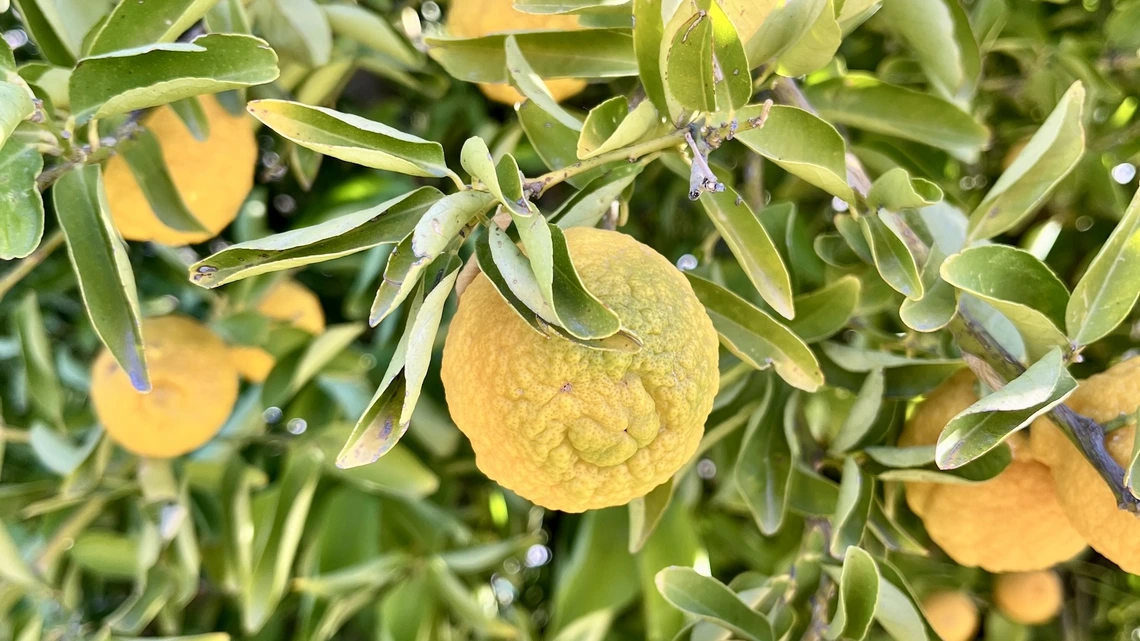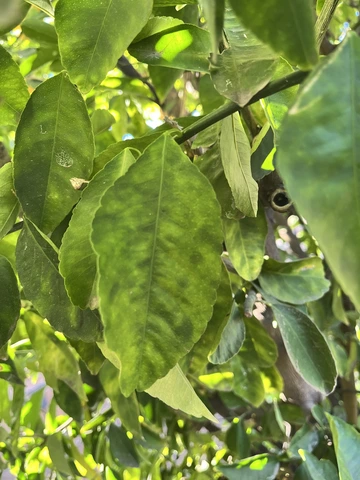Citrus disease new to Arizona threatens fruit trees in Santa Cruz County
Citrus Greening is caused by a tiny insect that has been found as far north as Oro Valley, but the disease is limited to Nogales, Arizona.

Huanglongbing, or citrus greening, causes stunted, discolored fruit. The disease has killed millions of acres of citrus trees globally.
The January discovery of a bacterial disease in Nogales, Arizona citrus trees is concerning, but the public shouldn’t panic, University of Arizona Cooperative Extension experts said during a recent meeting of Extension master gardeners.
It’s the first time the disease – huanglongbing or citrus greening – has been found in Arizona, though it has destroyed millions of acres of citrus trees globally, including in seven U.S. states. The bacterium, Candidatus Liberibacter asiaticus, is carried by an insect called the Asian citrus psyllid, which has been in Arizona since 2008.
The insects don’t harm the trees, but citrus greening causes bitter, discolored, lopsided fruit, eventually killing the trees. There is no cure and no risk to people or animals, the Arizona Department of Agriculture said in a news release.

Citrus greening causes discolored leaves.
Extension master gardeners met on a Zoom call to discuss the potential threat to southern Arizona backyard citrus trees. The advice from Extension horticulturist Glenn Wright, an associate professor in the U of A School of Plant Sciences, is to do nothing.
“Even if you live in Green Valley or Tubac or something like that, I don’t think we would recommend doing anything it all for the moment,” Wright said.
Because it is spread by flying insects, spraying is unlikely to help. Only area-wide spraying, which is how commercial orchards deal with citrus greening, would have impact, he said.
“The disease has been found, as of mid-March, on 17 trees on 11 different properties. Eight of those properties are along one street in Nogales,” Wright said.
The USDA will continue testing in Santa Cruz County to determine the extent of the infections and the AZDA will respond accordingly to make quarantine and mitigation plans, according to the news release. The psyllids - not carrying the bacteria - have been found on samples from Oro Valley and Green Valley, said Plant Sciences Associate Professor Alex Hu, Ph.D., an associate Extension specialist.
“Even in my own backyard (in Tucson), I saw a single psyllid feeding on a grapefruit tree,” Hu said.
Infected trees bear fruit much smaller than normal with withered or flattened seeds. The fruit also doesn’t ripen properly, Wright said.
“The bottom half of the fruit is likely to remain green,” he said.
If you suspect your trees are infected, contact the AZDA Tucson Operations Office at 520-628-6314. Only the USDA or the AZDA can conduct “regulatory” tests needed for action. Once the disease is detected – as happened in Nogales – following approved methods, the trees are removed, safeguarded and then taken to an approved landfill for burial.
Only tests conducted by USDA-certified labs are accepted by state and federal officials. In the coming months, the university plans to acquire the certification needed to conduct official citrus greening tests, Hu said.
Plant matter cannot spread the disease, but to contain infected psyllids, all citrus plant matter that is within the quarantine area in Nogales cannot be moved to other areas, Wright said.
This includes leaves, branches, trunks, roots, plant trimmings and green waste of citrus and plants related to citrus, including mock orange, orange jasmine and curry tree, may not be moved out of the quarantine zone. Commercially packed fruit and fruit free of stems and leaves are exempt from the quarantine, which for now is limited to Nogales, Arizona.
“Once the first psyllid with the bacterium shows up in Tucson, it will be a different ballgame. Then there will be a quarantine (in Tucson),” Wright said.
Preventing the spread of citrus greening and Asian citrus psyllid is critical to protecting Arizona citrus. Learn more by reading Arizona Homeowner Guide to Citrus Greening Disease or Citrus Greening and Asian Citrus Psyllid from the USDA.

